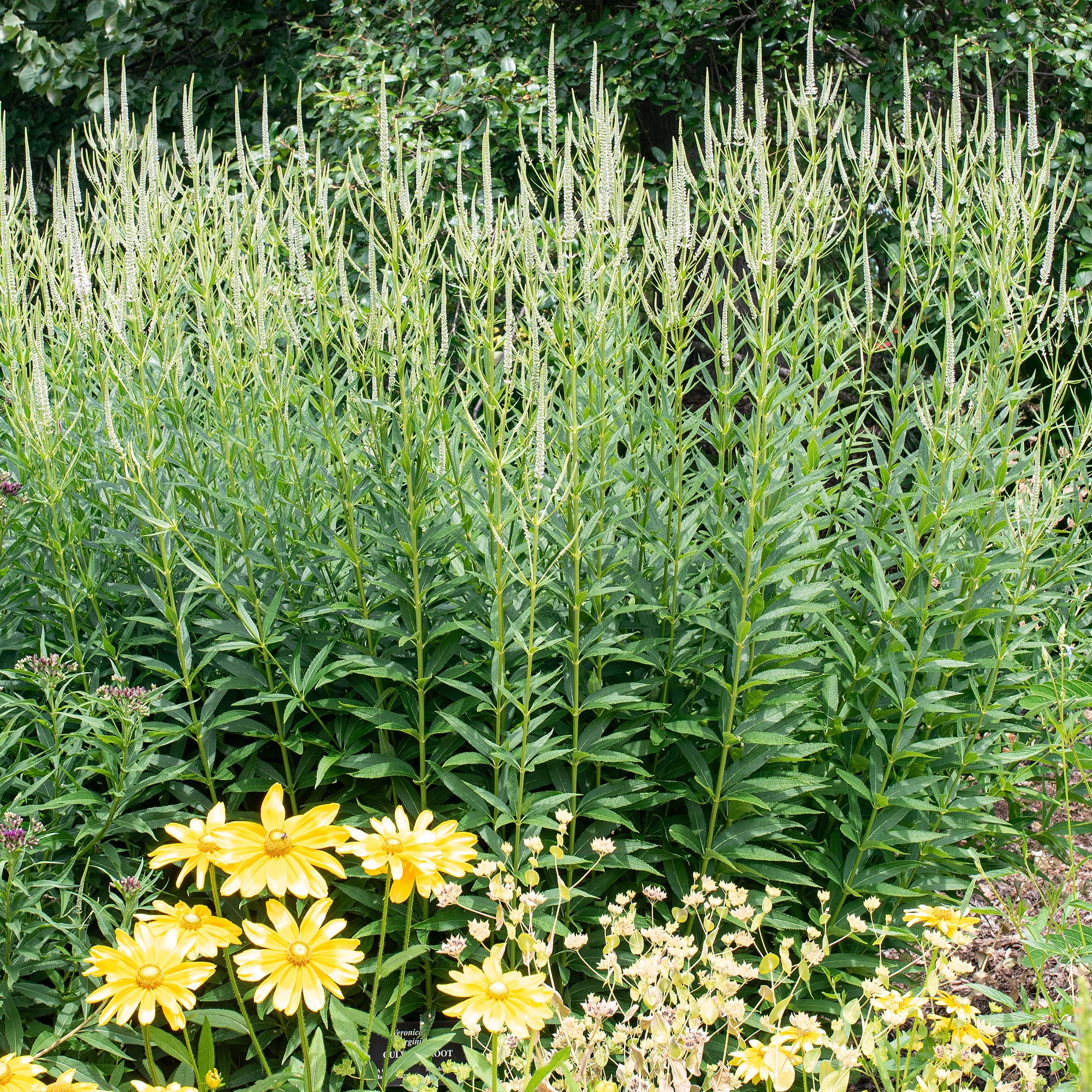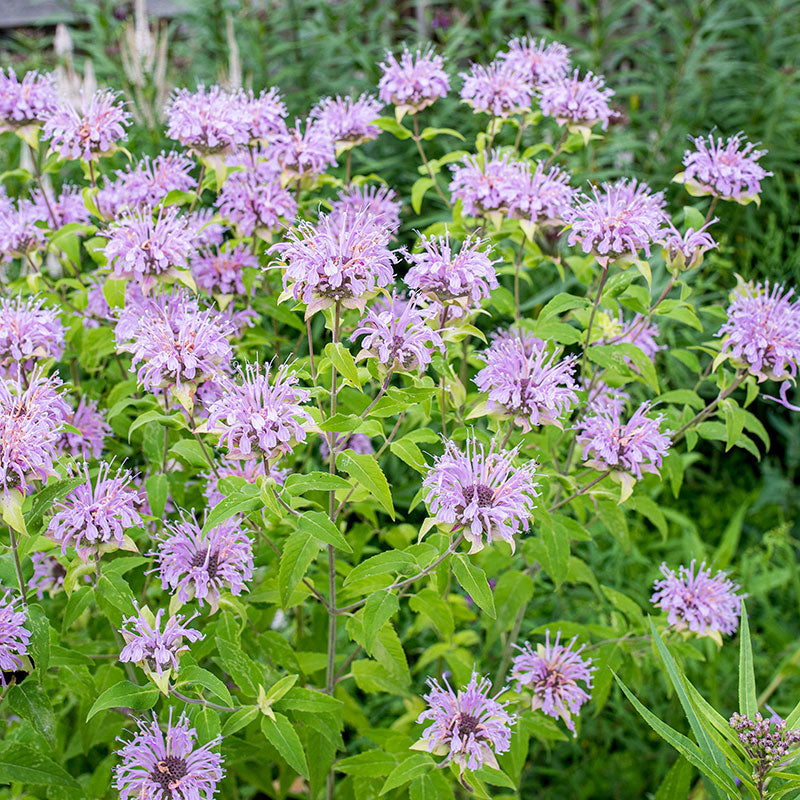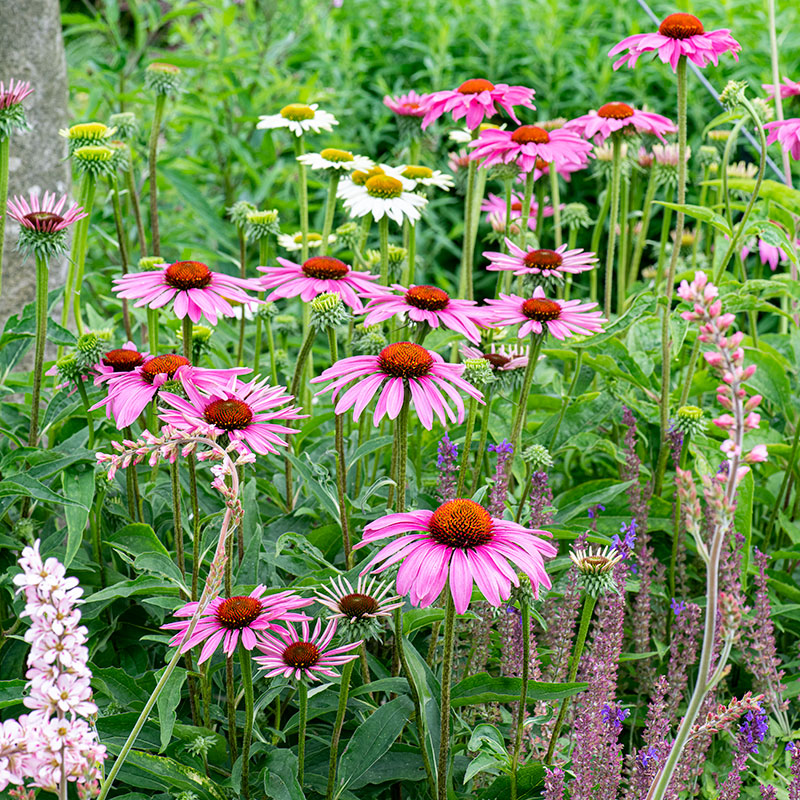SOWING INSTRUCTIONS
Depth:
Sow on the surface of a sharply drained media. Needs light to germinate.
Starting Indoors:
Stratify for 90 days. Sow in a container, cover with a plastic bag and refrigerate, or mix seed with damp clean sand or vermiculite, bag, and refrigerate at 35-40°F. Check often for germination and maintain a lightly moist medium. Transplant any seedlings as they germinate. After the chill period, sow into soilless media and keep at 65-75°F.
Starting Outdoors:
Direct sow in fall or earliest spring, or winter sow into pots in the shade, pressing into a thin layer of clean sand, as they need light to germinate. Cover with a wire screen to keep out mice and voles.
WHEN TO SET OUTSIDE
This summer bloomer can be set in the ground in early spring when there is still a chance for a light frost, or in early autumn.
PLACEMENT & CULTIVATION
Culver's root attracts butterflies, bees and beneficial insects, and is a host plant for some butterfly caterpillars. It does best in rich and moist but well-drained settings with full sun to light shade, and makes a great back border addition to natural settings, cottage gardens, or even more refined, formal settings. Also great for rain gardens. Can tolerate some clay or sand. A slow grower at first, by the third or fourth year it can be divided to increase. Self-sows.
Watering Details:
Water regularly to establish plants—provide about 1" twice per week for the first month after planting, and at least 1" every week thereafter during the growing season, accounting for particularly dry spells.
Soil pH:
Prefers slightly acidic pH levels.
Fertilizer:
Provide with about 2" of compost prior to planting and annually in early spring.
Diseases & Pests:
Culver's Root can be susceptible to mildew and leaf spot; place in a location where it will get a good amount of air flow. If disease is present, spray with an organic fungicide once per week until the issue is resolved.
When to Cut for Bouquets:
Harvest when flowers are nearly open.














































